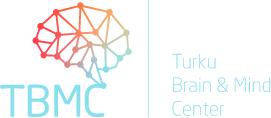Decoding the Developing Brain
Understanding the Structural Changes of Early Life Development
In a groundbreaking exploration of the intricate interplay between prenatal maternal health and the brain structure, Elmo Pulli recently defended his PhD dissertation in psychiatry, titled “Prenatal Maternal Health and Child Brain Structure: Implications for Non-verbal Ability and Optimizing Subcortical Segmentation”. Elmo’s research has brought to light the profound implications of early life exposures on brain development. He also examined the cerebral cortical structure and connection to five-year-old children’s cognitive skills, which tackles a crucial yet complex subject matter.
Perinatal Factors and Cognitive Abilities
During his early years in medical school, Elmo developed an interest in studying the structure and function of the nervous system. Therefore, he joined the Neuroimaging Lab of the FinnBrain Birth Cohort to pursue his MD thesis under the supervision of Associate Professor Jetro Tuulari, which served as the first part of his PhD project. Elmo meticulously investigated the connections between various prenatal exposures, such as chemical substances and maternal health factors, and their impact on brain development. This included studying the cortical volumes and surface areas of 5-year-old participants of the cohort.
“The first part of my thesis focused on reviewing the effects of prenatal exposures on brain development during the first two years of life. We found that chemical exposures and the mother’s health during pregnancy influence the shaping of the human brain during its formative stages. These effects persisted until the age of five in a study using FinnBrain data.”
Elmo also studied the neural cortical correlates of cognitive ability, especially non-verbal abilities, where he found a positive correlation between performance IQ and the volume and surface area of the left premotor region. This region, a part of the left frontal lobe, is commonly associated with non-verbal cognitive abilities. However, a new finding surfaced when he discovered that the volume and surface area of the right medial occipital lobe were linked to non-verbal skills.
“The association between the primary visual cortex and cognitive abilities was not typically reported in the literature. This is an interesting finding in a substantial sample of five-year-olds like the one we used that involved 173 participants. Previous research on the neural correlates of cognitive ability in this age group is scarce.”
“We also found that the surface area of the left inferior temporal cortex was associated with performance IQ. In addition to the medial occipital lobe, both are part of the ventral visual stream, which goes from the primary visual cortex to the visual association cortex, temporal-occipital junction, and then into the inferior temporal lobe. This pathway plays a role in pattern recognition, including face recognition and naming objects. The ventral visual pathway is not typically associated with cognitive ability. The results, however, might change with age due to the development of this pathway into a more complex network. The role of these key areas could be more pronounced in younger ages and deteriorate in adults, offering a new direction for further investigation. Importantly, much more research is needed to confirm this idea, and it is one of the topics I would be interested in researching in the future.”
Manual Segmentation as Opposed to Automated Methods
The dissertation also critically evaluated the accuracy of commonly used automatic methods, such as FreeSurfer and different options of FSL pre-processing, in segmenting subcortical gray matter nuclei from brain MRI scans compared to manual segmentation. Elmo pointed out the limitations of automated methods with some structures, underscoring the potential role of manual segmentation in enhancing them.
“Especially with smaller structures such as the amygdala and nucleus accumbens, the results were quite different between manual segmentation compared to FSL and FreeSurfer, as the automated segmentation overestimated the volumes. However, we plan to use these manual labels as templates for automated segmentation to get more accurate results than the regular automated ones.”
Implications and Future Directions
As Elmo transitions into a postdoctoral role, he aspires to investigate cognitive abilities in different age groups. In addition, he will expand his expertise to include task fMRI sequences, in which he is involved in the whole setup of the experiment.
“Performing longitudinal modeling with ten-year-old data to explore the neural correlates of cognitive ability would be a valuable setup for the near future. In addition, we will continue working on the subcortical segmentation templates and using them to create an automated segmentation. Creating high-quality templates and making them publicly available could significantly impact structural studies on subcortical structures, including, for example, the amygdala.”
A New Chapter in Brain Development
Elmo’s studies explain how prenatal exposures and environmental factors shape the developing brain. The findings contribute to the existing literature and highlight the importance of refining methodologies in structural brain research. With his keen interest in different neuroimaging techniques, cognitive ability, and environmental factors, Elmo is utilizing all the methods to comprehensively study the developing brain.
You can read Elmo’s dissertation here.

